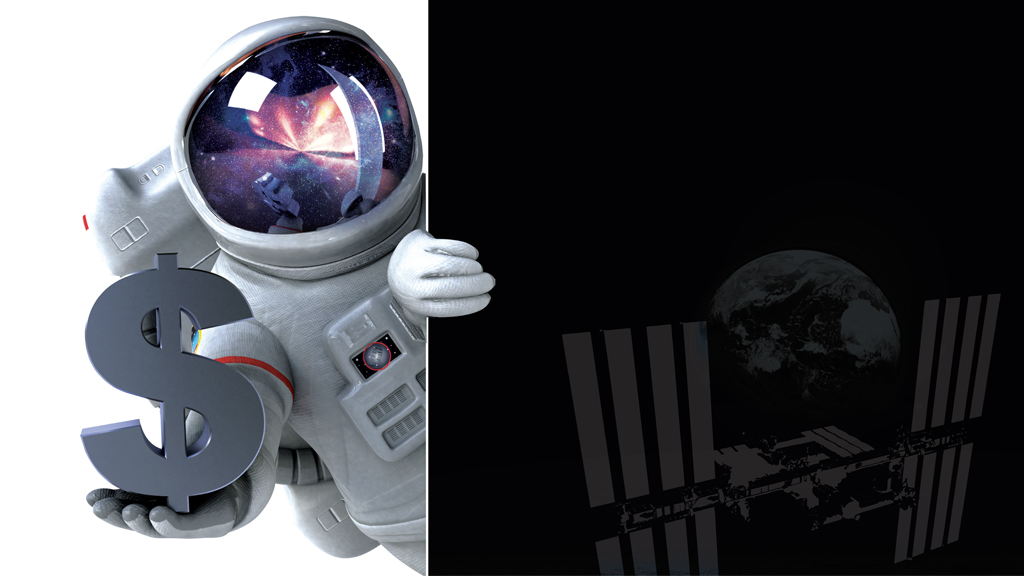Cost in Space

During the Apollo program, the United States was in the middle of the Cold War with Russia. The public was in an ideological trance, under the spell of jingoism to the extent where they wanted, nay, needed to be better than the Russians at everything. Money be damned.
“They were basically given a blank check. With the Apollo program, we were racing the Russians, we were in the middle of the Cold War and we wanted to beat them. With that comes public support because people want to win. And with that comes money. Because it’s war time. It’s been a struggle to get the kind of money that we got with Apollo,” explained Alex Stuckey, Houston Chronicle NASA and science reporter.
In 2019, NASA has anything but a blank check. In fact, an often regurgitated factoid is that, according to the Harvard Business Review, NASA’s funding is currently at 0.5% of the federal budget, compared to 4.5% 50 years ago. That begs the question, why exactly should the public want to spend more money on NASA?
According to David Brady, an ISS associate program scientist for NASA’s Johnson Space Center, NASA’s benefits to humanity are so immense and worthy of more funding because its discoveries and breakthroughs inspire new generations of scientists and engineers and provide practical, tangible advancements to our daily lives.
“People continue to support space exploration because they see it as ‘dreaming big dreams and going out to make them come true,’ so we’re always interested in trying to tell people how our research applies not only to their daily lives but to extending humanity out into the cosmos. This gives them plenty of reason to be interested in what we’re doing both from a standpoint of tangible benefits and from a standpoint of inspirational benefits as well,” explained a passionate Brady.
“NASA is very dedicated to celebrating the successes of the past, the ability to dare to dream and do great things, the desire to explore and go out there and do things that inspire people. I like to visit elementary schools and I tell them that even if you want to be an astronaut or a scientist, NASA isn’t just about STEM engagement, even though that’s huge part of our message and workforce, NASA is about dreaming big dreams and then going after them,” Brady said.
In her article “Going Back: Why returning to the moon is so important for the U.S.,” Alex Stuckey echoed the notion of NASA as inspiration, writing, “When the Apollo 11 crew reached the moon in July 1969, they did more than just beat the Soviet Union in the Space Race. They inspired a generation of scientists and engineers.”
In this piece, Stuckey also cited Pascal Lee, co-founder and chairman of the Mars Institute, a nonprofit headquartered at NASA’s Ames Research Center in California, “This was such an exciting thing that (people) embraced science and technology boldly, and it’s because of this that there was a surge in interest in STEM (science, technology, engineering and math) fields that the U.S. has today. The boost in STEM areas not only helped the country remain a technological superpower for decades, it also created a huge economic boost.”
Lee continued, “The U.S. needs to go somewhere beyond Earth’s orbit, whether it be the moon or Mars, to achieve that sort of inspiration again.”
For all the talk about NASA’s benefit to humanity via inspiration, it’s easy to overlook all the tangible work NASA has done in recent years, and all of the ways this work benefits the very public that is so reticent to invest money in it. Here are some of the ways NASA has contributed to our everyday lives here on Earth. Just a few of NASA’s benefits to humanity:
Video stabilization software allows users to enhance the quality of shaky footage. It has been used to locate missing children, analyze footage of terrorist attacks, and even helped confirm the capture of Saddam Hussein.
Cooling suits, created to keep astronauts comfortable during forays on the moon, are now worn by race car drivers, nuclear techs, sufferers of multiple sclerosis, and even kids with disorders like hypohidrotic ectodermal dysplasia, which keeps their little bodies from cooling themselves down. Thank you, NASA.
The technology behind the robotic machines used to build the ISS also powers the robotic tools that assist in performing detailed, difficult surgeries in hospitals. This robotic technology has allowed for complex surgeries, like brain tumor removal, to be performed. It is commercial innovations like these that prove funding NASA is in the best interest of the public at large. As David Brady put it, “We use creative pursuits in order to further science and answer questions, which eventually lead to innovations, which eventually lead to economic benefits, which eventually lead to more exploration.”
One of NASA’s biggest benefits to humanity is the commercialization of the low-Earth orbit (LEO). The LEO is the area of Earth’s orbit just close enough to the planet for convenient transportation, communication, and resupply. This is prime location for any proposed future platform. Companies are interested in developing commercial space stations in LEO.
“The commercialization of low-Earth orbit, the expansion of businesses there has doubled over the last 10 years now, the economy is now up into the $300 billion dollar range. We see that as very encouraging from the standpoint of being able to establish markets that allow commercial companies to come forward and do things in low-earth orbit as NASA continues to push out into the cosmos,” Brady proclaimed.



